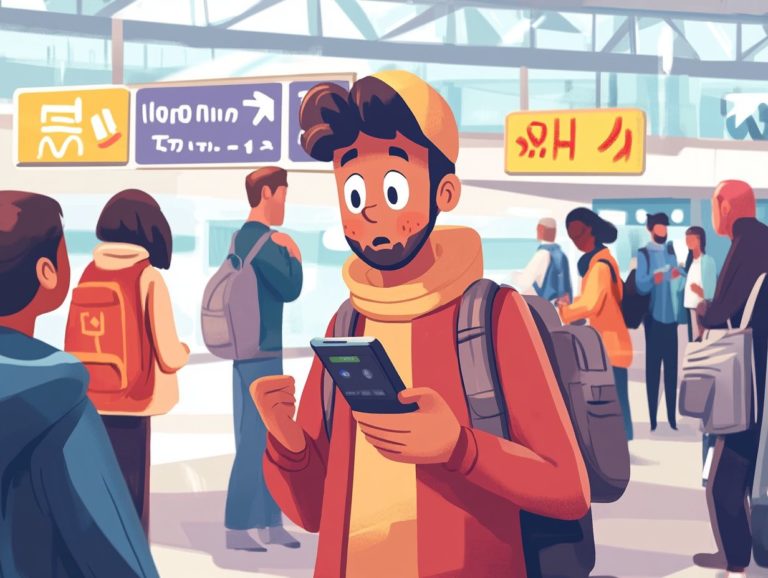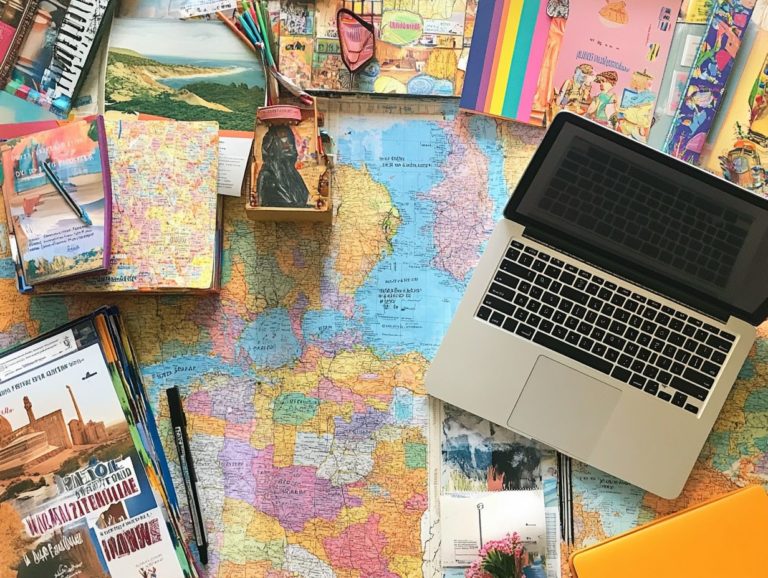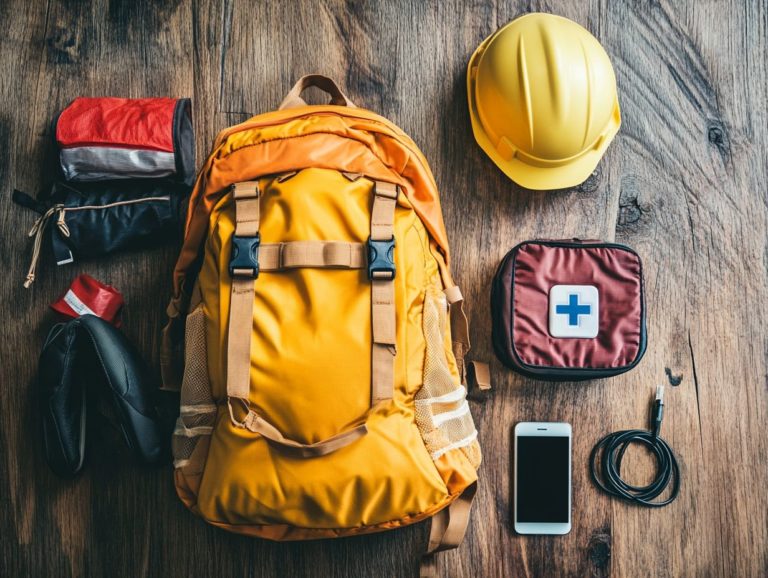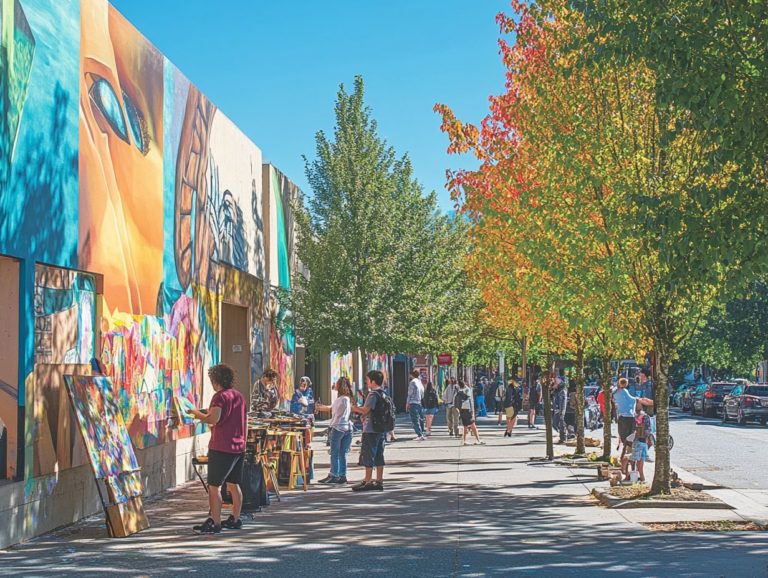Navigating Public Transportation in a New Country
Exploring public transportation in a new country is thrilling and full of adventure! With a multitude of transportation options at your fingertips, grasping the intricacies of fares and payment methods becomes essential for optimizing your travels.
This guide helps you plan your journey, offering valuable insights on effectively utilizing maps, schedules, and connections.
From understanding local etiquette to tackling common hurdles such as delays or misplaced belongings, this information will empower you with the knowledge required to explore with confidence and ease.
Contents
- Key Takeaways:
- Understanding the Public Transportation System
- Planning Your Route
- Tips for Navigating Public Transportation
- Common Challenges and How to Overcome Them
- Frequently Asked Questions
- What is the best way to navigate public transportation in a new country?
- How can I purchase tickets for public transportation in a new country?
- What are some safety tips for using public transportation in a new country?
- Are there any cultural norms or etiquette I should be aware of when using public transportation in a new country?
- What should I do if I get lost while using public transportation in a new country?
- Is it necessary to learn basic phrases in the local language for using public transportation in a new country?
Key Takeaways:
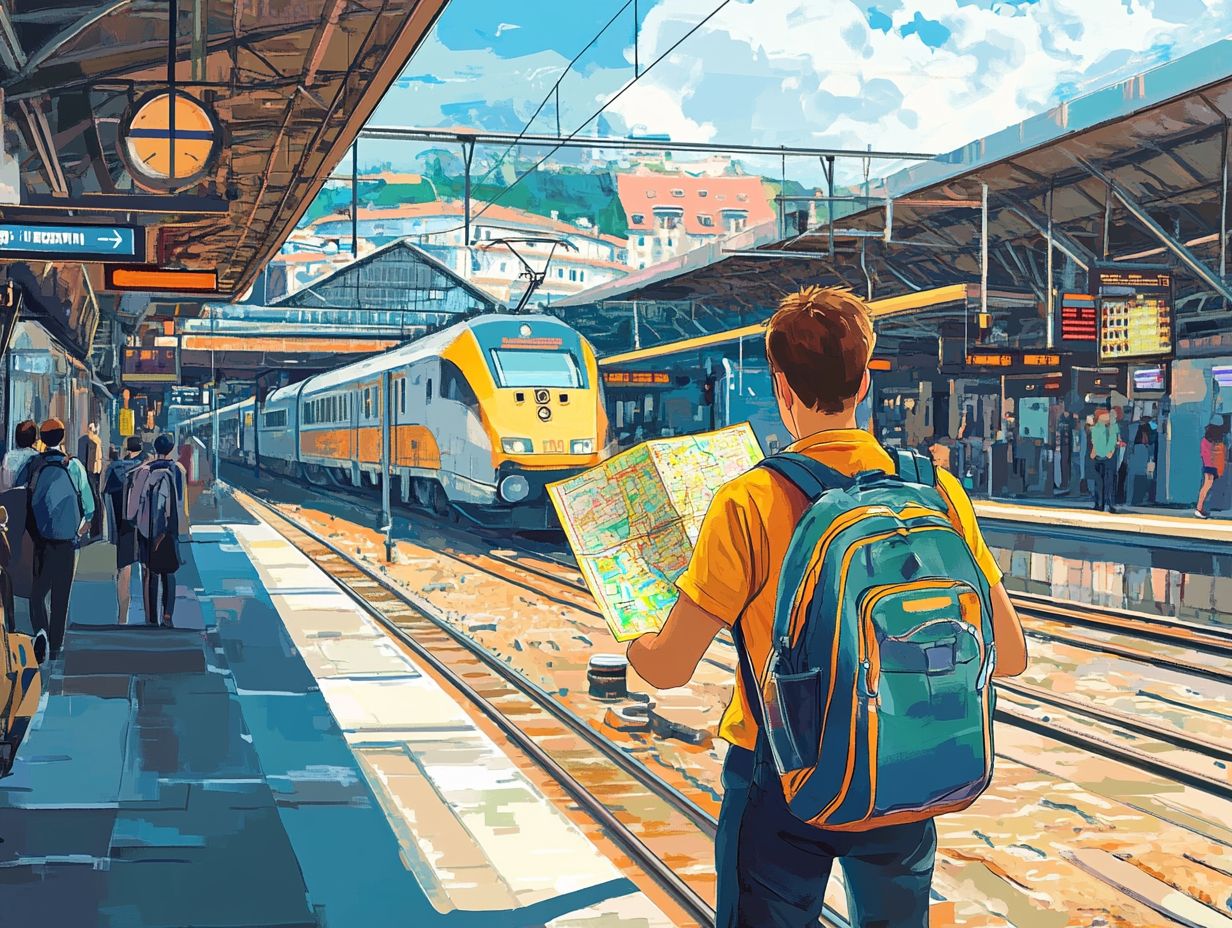
- Explore the types of public transport available to avoid confusion.
- Plan your route with maps and schedules to save valuable time.
- Learn local customs and safety rules for using public transport.
Understanding the Public Transportation System
Understanding Japan’s public transportation system is crucial, especially if you’re a first-time traveler eager to explore iconic cities like Tokyo, Osaka, and Kyoto.
With a comprehensive network encompassing trains, subways, and buses, getting around is efficient and convenient. To navigate this system like a pro, consider the Japan Railway Pass, which offers flexibility to travel across various regions and makes your experience seamless and enjoyable.
Grasping the intricacies of fares, schedules, and routes helps minimize culture shock and enhances your travel experience.
Types of Transportation Available
Imagine yourself in Japan, where an impressive array of transportation options awaits you. From high-speed trains to subways and buses, city exploration in places like Tokyo and Osaka is a breeze.
The Shinkansen, or bullet train, is your ticket to unparalleled speed and reliability, whisking you between major cities in a fraction of the time compared to other transport methods.
As you navigate the extensive subway systems in urban areas, you’ll discover an unbeatable level of coverage that ensures even the most hidden gems are easily accessible.
If you’re feeling adventurous and heading to less accessible regions, buses offer a cost-effective way to connect with more remote areas while linking you to larger hubs.
With all these options at your disposal, you’ll find yourself immersed in a seamless network that elevates your experience of navigating Japan.
Fares and Payment Methods
Understanding fares and payment methods is crucial for navigating Japan’s public transportation system smoothly. This allows you to enjoy your travel experience without any unexpected financial surprises.
Various modes of transportation, such as trains, buses, and subways, have unique fare structures that can vary significantly depending on distance and service types. For instance, local trains may charge you per segment traveled, while express services often come with a flat rate.
To simplify your fare payment process, consider utilizing IC cards, which are smart cards for easy fare payment. These cards enable cashless transactions across multiple transport systems, making your journey more seamless. Mobile payment options are also gaining traction, offering you a modern and efficient way to settle fares quickly.
When managing Japanese currency, being mindful of exchange rates, which determine how much foreign currency you get for your money, is essential. Using local ATMs can provide you with more favorable rates compared to traditional currency exchange services. It s also wise to keep a small amount of cash on hand for ticket machines and small vendors.
By familiarizing yourself with these tips, you can ensure a more enjoyable journey through Japan.
Planning Your Route
Plan your route in Japan with a smart mix of maps, schedules, and real-time updates. This will help you navigate the vast public transportation system easily.
Use mobile apps and printed maps to pinpoint the best routes to your desired destinations. Whether you re visiting the stunning Meiji Jingu Shrine during cherry blossom season or exploring the lively streets of Shibuya, you ll find it effortless.
Understanding local schedules, transfer points, and travel times is crucial, especially during peak hours when you may encounter surprising differences in culture. Prepare in advance to enjoy a stress-free journey and make the most of your visit.
Using Maps and Schedules
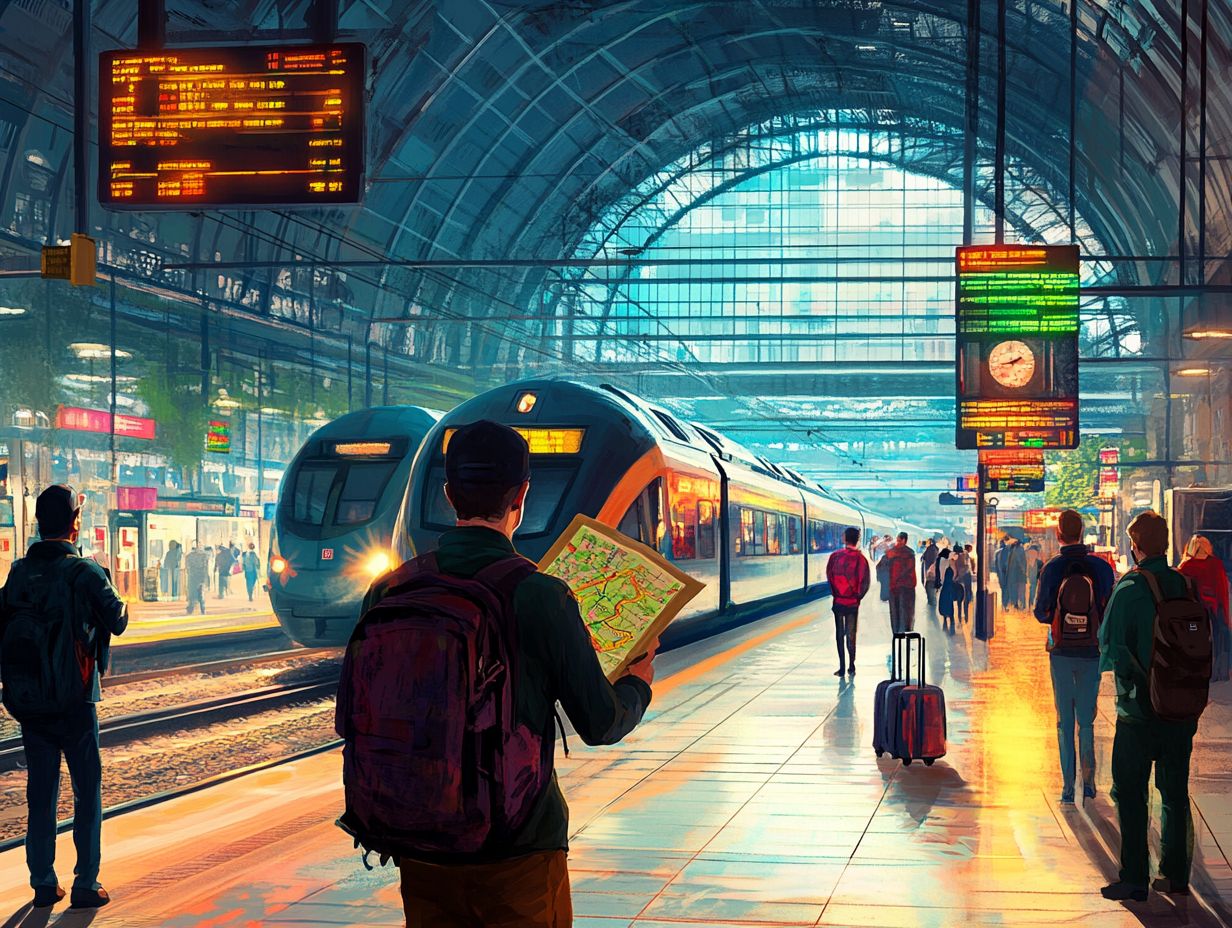
Using maps and schedules effectively can greatly enhance your travel experience in Japan. This will allow you to navigate the intricate public transportation system with confidence.
Imagine having access to well-designed station maps that clearly mark entrances, exits, and facilities. Comprehensive city maps highlight all the key attractions, giving you a wealth of resources. If you re tech-savvy, transit apps provide real-time updates on train schedules and routes, making it easy to adapt your plans on the go.
When assessing schedules, pay close attention to the color-coded lines and their frequencies. This will help you gauge waiting times effectively. To maximize your efficiency, visit top attractions during off-peak hours, and reserve peak times for travel when trains operate at their fastest and most frequent.
Transfers and Connections
Understanding transfers and connections in Japan’s public transportation system is crucial for travel efficiency. This is especially true if you re using the Japan Railway Pass to explore multiple destinations.
Japan is renowned for having one of the most efficient and user-friendly transportation networks globally. By learning how to navigate train stations and bus terminals, you can significantly enhance your journey.
Familiarize yourself with key transfer points, like major railway hubs. This will allow you to transition seamlessly between shinkansen (bullet train), local trains, and buses. It s wise to check real-time schedules and platform information, readily available through various mobile apps and station signage.
Mastering these connections not only elevates your travel experience but also unlocks a realm of cultural exploration and adventure. Get ready to uncover hidden gems throughout this fascinating country!
Navigating public transportation in Japan with finesse involves grasping local etiquette and safety guidelines. Being aware of local etiquette keeps surprises at bay and enhances your travel experience as you explore vibrant cities like Kyoto and Osaka.
Embrace these nuances to immerse yourself fully in the rich culture and seamless efficiency of Japan s transit systems.
Etiquette and Safety
Understanding etiquette and safety is essential when navigating public transportation in Japan. It s not just about getting from point A to point B; it s about immersing yourself in the cultural traditions that make the experience both unique and respectful.
Being mindful of your surroundings and adhering to local customs will enhance your journey and foster a sense of community among fellow passengers. Maintain quiet conversations, avoid loud phone calls, and keep your music at a low volume, as Japanese society cherishes tranquility in shared spaces.
Always prioritize giving up your seat for elderly individuals, pregnant women, or those with disabilities. It s a simple yet profound way to show care and respect. Conversely, avoid eating, drinking, or using strong fragrances, as these can disrupt the comfort of those around you.
By adopting these practices, you can contribute positively to the harmonious atmosphere that defines Japan’s public transport system. This makes it a pleasant experience for everyone involved.
So grab your map and start your adventure today!
Navigating language barriers in Japan might seem daunting. However, effective communication strategies and tools can enhance your travel experience.
By embracing various resources, you can bridge the communication gap and transform your journey into something enjoyable. Using translation apps like Duolingo is very helpful, providing quick translations and helpful pronunciation guides. Learning essential greetings and common phrases in Japanese can effortlessly break the ice and lead to more meaningful interactions with locals.
A simple “Konnichiwa” or “Arigatou gozaimasu” can create a warm atmosphere and show respect for the culture, setting the stage for a richer, more immersive experience.
Common Challenges and How to Overcome Them

Encountering challenges like delays and cancellations in Japan’s public transportation system can be frustrating. Yet, learning how to handle these situations can elevate your overall travel experience.
Delays and Cancellations
Delays and cancellations can happen in any public transportation system, including Japan’s. Being prepared allows you to navigate these inconveniences with ease.
Weather events like typhoons (strong tropical storms) and heavy snowfall frequently disrupt services, along with occasional technical hiccups in the fast train system. Remember that scheduled maintenance can also lead to unexpected changes in routes and service availability.
To stay informed, use mobile apps like the Japan Transit Planner or visit train company websites for real-time updates. When delays occur, having a flexible itinerary is key. Explore alternative routes or transport options; sometimes the unexpected can lead to your most memorable travel experiences.
Lost or Stolen Items
Losing something on public transport can be stressful, but knowing what to do can help you stay calm.
To navigate this situation effectively, stay calm and act swiftly. Start by retracing your steps and checking with the nearest station’s lost and found, as many items are often turned in by well-meaning passengers. If that doesn t yield results, consider filing a report with the local police. A detailed description of your lost item will be very helpful in this process.
To prevent future mishaps, always keep your belongings secure and remain vigilant, especially in crowded trains or buses. Being proactive will help keep your travel experience as smoother as possible.
Frequently Asked Questions
Here are some common questions to help you navigate public transportation in a new country:
The best way to navigate public transportation is to research and familiarize yourself with the different modes available, such as buses, trains, and subways. Download transportation apps or obtain maps and schedules from the local transit authority.
How can I purchase tickets for public transportation in a new country?
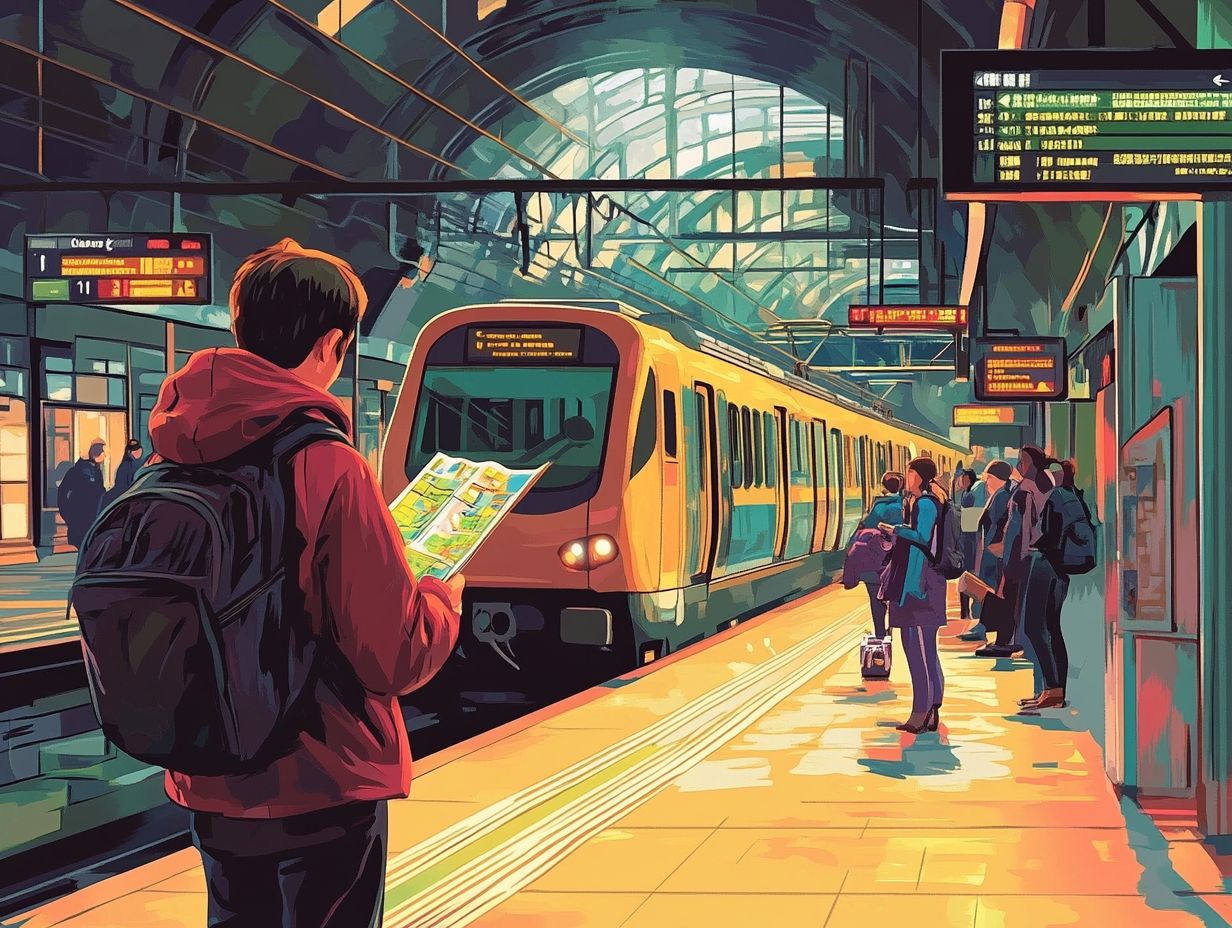
The methods for purchasing tickets may vary by country. Common options include buying them at ticket counters, using vending machines, or purchasing them online. Ensure you have the correct currency and check for any discounts available for tourists.
What are some safety tips for using public transportation in a new country?
Always be aware of your surroundings and keep your belongings close. Avoid using public transportation during late hours or in areas known for high crime rates. It is also recommended to travel with a companion, especially if you are unfamiliar with the language or routes.
Are there any cultural norms or etiquette I should be aware of when using public transportation in a new country?
Researching and understanding the cultural norms and etiquette of the country you are visiting is essential. Be prepared to adapt quickly!
Some cultures expect you to give up your seat for pregnant or elderly passengers. Others may find it rude to talk on the phone or play loud music on public transportation.
What should I do if I get lost while using public transportation in a new country?
Stay calm and ask for help from the transit authority or a nearby passenger. Don’t hesitate ask for help immediately!
Having a map or a transportation app is also helpful. If you feel unsafe, find a well-lit area and call for assistance.
Is it necessary to learn basic phrases in the local language for using public transportation in a new country?
While it may not be strictly necessary, knowing some simple words and sentences is always helpful. This makes communication easier and shows respect for the locals.
Key phrases to learn include asking for directions, confirming your destination, and expressing thanks.

